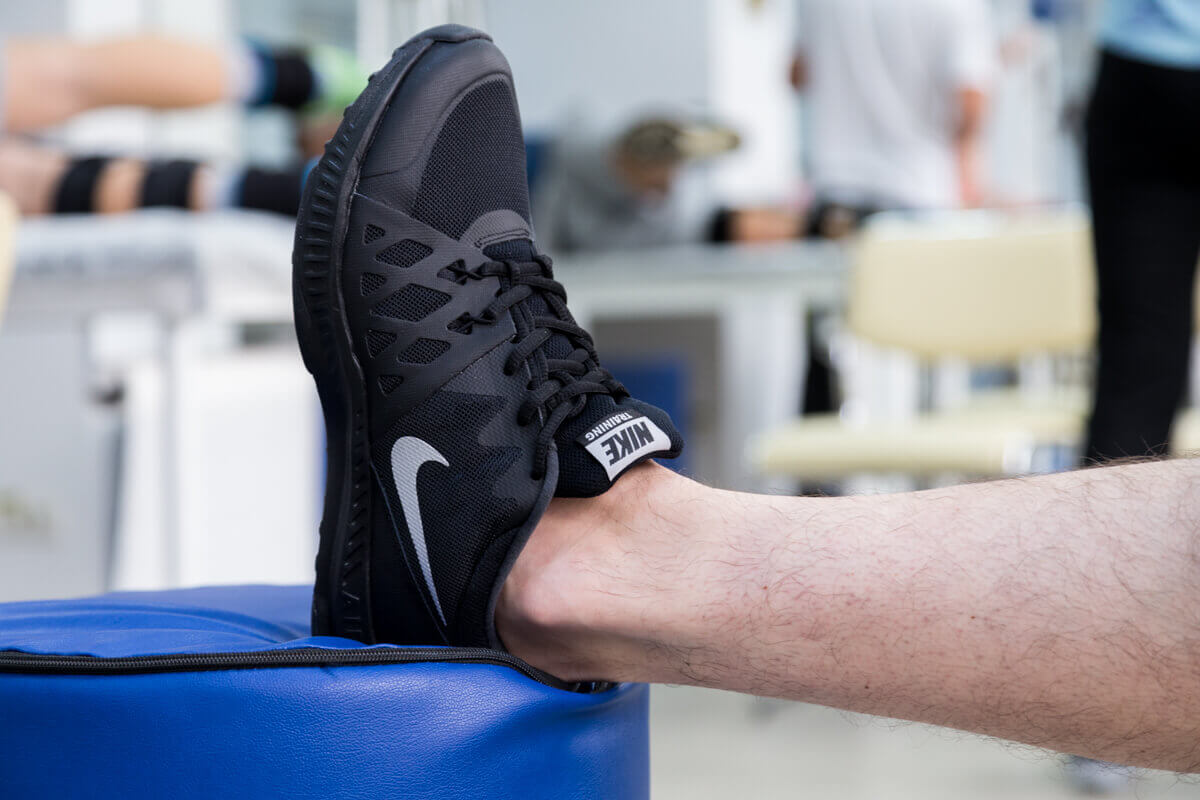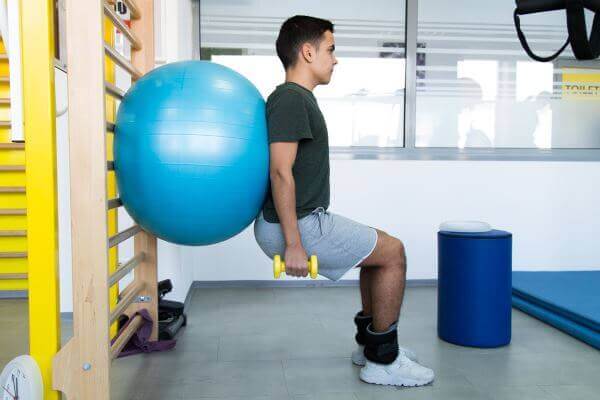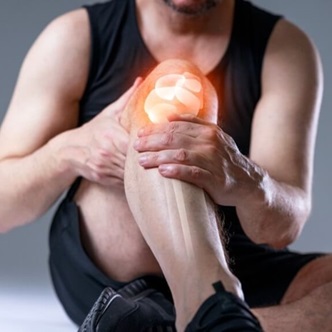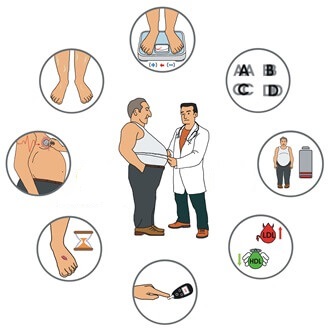Vezi detalii
CITESTE MAI MULT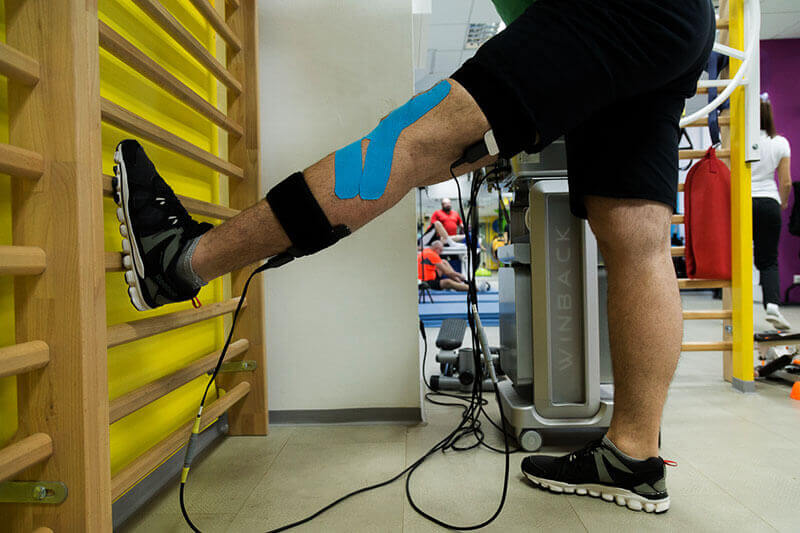
Recovery after mosaicplasty (osteocartilaginous graft transfer)
The articular cartilage is the tissue that represents the functional key of the synovial joints. It varies the thickness, cell density, and composition of the matrix, both between different joints and within the same joint. However, all synovial joints contain articular cartilage made up of the same components and which play the same role. The properties that make it remarkable and unique are its pressure resistance, durability, and ability to distribute the pressure both on the surface and consecutively on a larger area of the subchondral bone.Mosaicplasty is a surgical technique used to repair articular cartilage lesions with dimensions between 1-3cm. This method consists in taking healthy cartilage from the respective joint from a less important area and transplanting it into the load-bearing area where the cartilage defect is.
This surgical technique is used in the knee and ankle joints, practically in the lower limb where the forces passing through these joints are much higher than in the upper limb, and cartilage defects are very common. The necessary cartilage is provided from the non-bearing areas of the knee, ie from the areas where there is no axial load (from the edges of the articular surfaces). The idea is that the body does not need this cartilage and the bare areas of cartilage can be used in the load-bearing areas of the joint. Over time, the holes left after harvesting the osteocartilaginous grafts will fill with bone tissue and scar tissue.
Mosaicplasty is indicated in young patients (under 50 years of age), with symptomatic chondral defects or osteochondral defects smaller than 3 cm, the supporting part of the femoral condyle. Pre-Osteoarthritis is an absolute contraindication to this procedure. Any dislocation of the limb - valgus/varus or sagittal instability must be treated simultaneously.
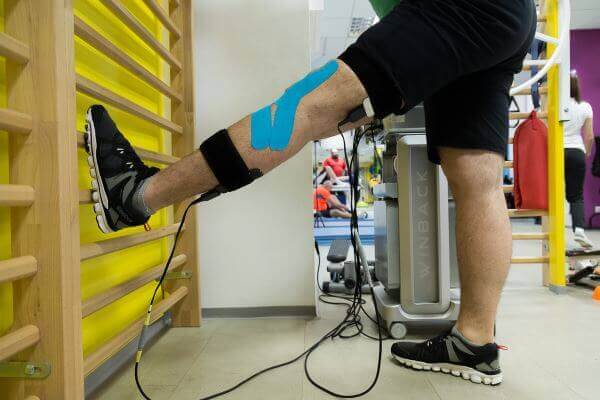
Post-surgery rehabilitation
Proper post-operative knee recovery is vital to operative success, as it is divided into several stages.Phase 1: 0-2 postoperative weeks
Objectives:
- Protecting the cartilaginous area
- Favoring healing
- Obtaining and maintaining a complete extension
- Obtaining a 90-degree flexion
- Fighting local edema
- Strengthening the quadriceps muscle
- Avoidance of thrombus formation in the pelvic limbs
Activities:
- Kinetec: Use the kinetec (a device that will mobilize your knee) as much as possible in the first two weeks. Remove your orthosis during these exercises. You should use the device for at least 10 hours a day. The knee extension should be set at -5 degrees to favor its full extension. You must be able to stretch your knee completely. The device is designed to include a 5-second extension pause. The flexion module should be set at 30-40 degrees and should be gradually increased to 90 degrees as you tolerate more and more knee flexion.
- Orthosis/crutches: For patellar and trochlear injuries, you will wear a knee orthosis, set to stop the knee from bending more than 30 degrees, and will keep the knee in full extension. You can put your entire body weight on the operated leg, in the limit of pain. In the beginning, you will use crutches on the go and you will give them up once you have regained your confidence in your knees. For condylar defects, the orthosis is not used, but you will use the crutches for a longer period, also the loading on the operated leg is being done progressively, according to the doctor's advice.
- Apply ice to reduce pain and swelling. Use ice according to the following schedule: 20 minutes ice, 20 minutes without during the first postoperative day. Then apply ice as many times as you feel the need for 15-20 minutes over the next postoperative days. Put a towel between the skin and the ice to prevent frostbite.
- You can shower and wet the incisions of the portals. However, do not soak them in a tub or Jacuzzi until the threads have been removed.
- Take an aspirin every morning.
- You can wear elastic stockings under the knees to prevent swelling of the feet. Also, do at least ten ankle mobility exercises to prevent edema and prevent thrombophlebitis.
Exercise program:
Exercises of the quadriceps muscle - to maintain muscle tone in the thigh and to strengthen the knee.Sit on your back with your knee at maximum extension as shown. Contract and maintain the contraction of the anterior muscles of the thigh (quadriceps), the knee becoming flattened and straight. If done correctly, the patella will slide proximal to the thigh muscles.
Hold the contraction for 5 seconds. Perform at least 20 repetitions 3 or 4 times a day.
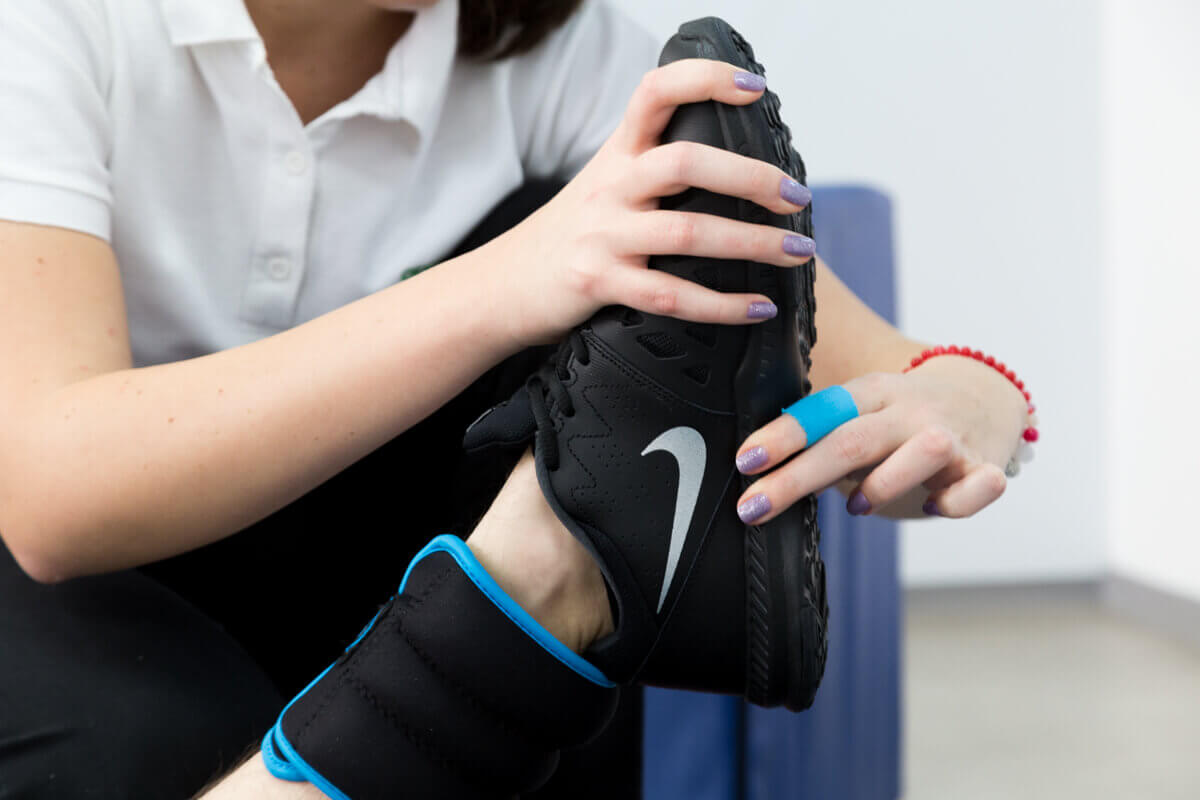
Heel slips - to regain your knee flexion.
While lying on your back (figure), slide your heel to bend your knee. Continue to bend the knee until you feel a "stretch" in the anterior region of the knee. Hold the flexion for 5 seconds and then ease the flexion and stretch the knee. While the knee is stretched, you can combine the exercises and repeat the quadriceps. Repeat 20 times, 3 times a day.
Sitting heel slips - to regain your knee flexion. While sitting on a chair, pull your heel back as if you were trying to put your foot under the chair. Hold for 5 seconds and return to the extended position. You can help the opposite leg if you feel the need. Repeat this exercise 20 times, 3 times a day.
Plantar flexion and dorsiflexion of the foot - mobilize the foot up and down to stimulate circulation in the foot. Perform at least 10 such movements every hour.
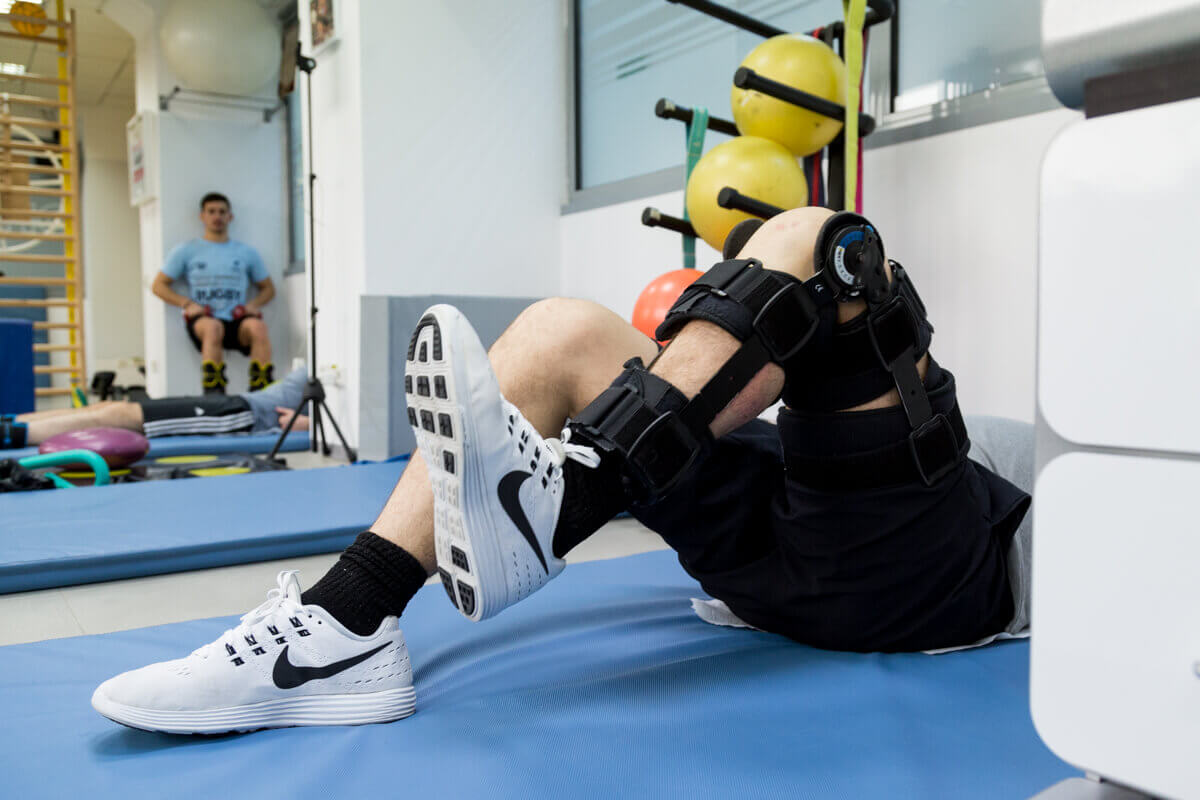
Phase 2 - 2 to 6 weeks postoperatively
Objectives:
- Do not overload the knee, promoting healing
- Regain complete knee mobility
- Start muscle strengthening
Exercise program:
Medicinal bicycleUse a medicinal bicycle to mobilize the knee and increase its flexion. If you cannot perform complete pedals, then keep the operated foot on the pedal and pedal back and forth until the knee bends enough to allow a complete cycle. Most people manage a complete cycle first in the opposite direction, followed by the forward direction. You can use the bike, without resistance, for 10 to 20 minutes a day. Adjust the height of the bicycle saddle so that when you are riding the bike, the knee is fully extended when the pedal is in the lowest position. Pedaling will be done with the help of the forefoot (toe), and not the heel.
Exercises of the quadriceps muscle - to maintain muscle tone in the thigh and to strengthen the knee.
Sit on your back with your knee at maximum extension as shown. Contract and maintain the contraction of the anterior muscles of the thigh (quadriceps), the knee becoming flattened and straight. If done correctly, the patella will slide proximal to the thigh muscles.
Hold the contraction for 5 seconds. Perform at least 20 repetitions 3 or 4 times a day.
Heel support - to fully stretch your knee, lie on your back with a towel rolled under your heels, or sit on a chair with your heel on a stool, just like in the picture. Allow the knee to relax in extension. If the knee will not stretch completely, you can put a weight (900 g to 2.25 kg) on the thigh, just above the kneecap. Try to maintain this position for 5 minutes, 3 times a day. While maintaining this extension position, work the quadriceps exercises.
Heel slips - to regain your knee flexion.
While lying on your back (figure), slide your heel to bend your knee. Continue to bend the knee until you feel a "stretch" in the anterior region of the knee. Hold the flexion for 5 seconds and then ease the flexion and stretch the knee. While the knee is stretched, you can combine the exercises and repeat the quadriceps. Repeat 20 times, 3 times a day.
Extension of the limb
Contract the quadriceps muscle so that the knee is flat, straight and fully extended. Try to lift the entire operated limb above the plane of the bed or floor. If you are able to keep your knee straight up to about 45 degrees, pause for a second and then gently lower your foot back on the bed. Relax and repeat. If your knee bends as you try to lift your limb, do not continue with these exercises. Try the quadriceps exercises again until you are able to lift the limb without bending the knee.
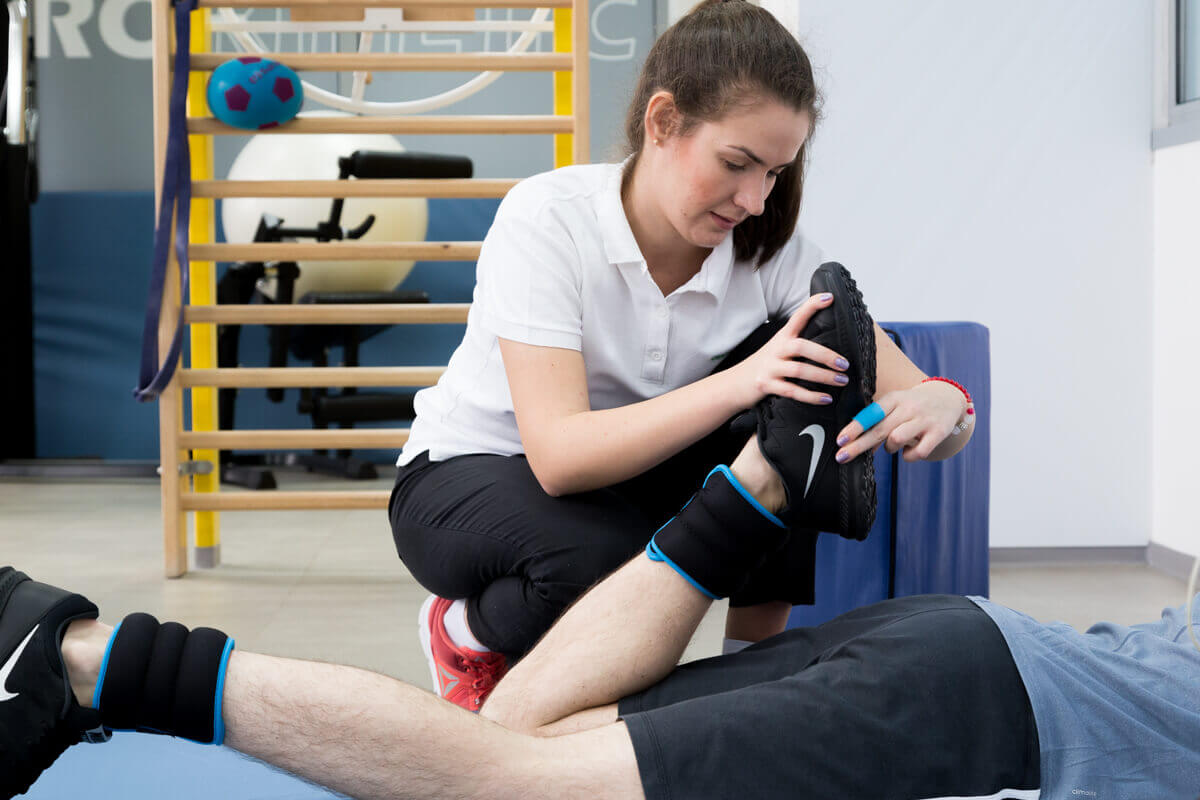
Short lifts
With your knee bent over a rolled towel or blanket, lift your leg so that your knee is fully extended. Keep your knee locked in extension for 5 seconds, then lower gently. Repeat 20 times.
Standing hamstring curls
Position yourself facing the wall, using it for balance and support. While sitting on the limb without an LIA injury, bend your knee and raise your knee to the bottom. Keep this position flexed for one second. Gently lower your limb back to the floor. Keep your hips aligned as shown. Repeat 20 times.
Peak lifts
Stand facing a table with your hands on it for balance and support. The knees will be in maximum extension. Contract the quadriceps and keep the knee in maximum extension. Get up on your toes while keeping your knees in maximum extension. Hold this position for one second, then return to the starting position. Repeat 20 times.
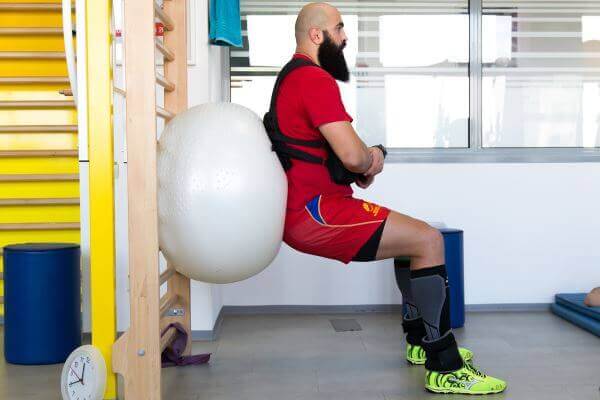
Hip Abduction
Lie on your healthy side. The knees will be in maximum extension. Raise the operated limb to 45 degrees, as in the figure below. Hold this position for a second, then return gently. Repeat 20 times.
Phase 3: 8-12 weeks post-surgery
Objectives:
- Walk normal
- Regain complete knee mobility
- Regain your muscle strength
Exercises:
Stretching hamstringPerform these exercises in the position in the next figure. Bend forward at the hip, keeping the knee fully extended, until you feel a slight stretch in the back of the thigh and knee. Hold the stretching position for 15-20 seconds and repeat 3-5 times.
Stretching quadriceps
This exercise is performed as in the adjacent position. Perform a movement near the heel. When you feel a stretch in the front of the thigh and knee, hold the position for 15-20 seconds for 3-5 repetitions.
Leg stretching
Squatting in the chair
In these exercises, lower your bottom towards the chair until you have sat on it. Do not sit in a chair, instead, get up immediately and return slightly to the starting position. Remember to keep your head above your feet and bend your pelvis as you descend. After the first week, you can hold dumbbells while performing these exercises. Start with 1.5 - 2.5 kg in each hand. You can add 1-2 kg per week until you reach 10 kg. Perform 3 sets of 10-15 repetitions.
Slips on the wall
Stand up straight with your back and bottom touching the wall. Place your feet 30 cm away from each other and 6 cm away from the wall. Bend your knee and slide along the wall until your knees are bent at 45 degrees. Hold this position for 5 seconds and then return to the starting position. Perform 3 sets of 10-15 repetitions.
In addition, you will continue the exercises started during the second phase.
Additional exercises
The following exercises can be added to your schedule starting 12 weeks post-surgery:Foot Press
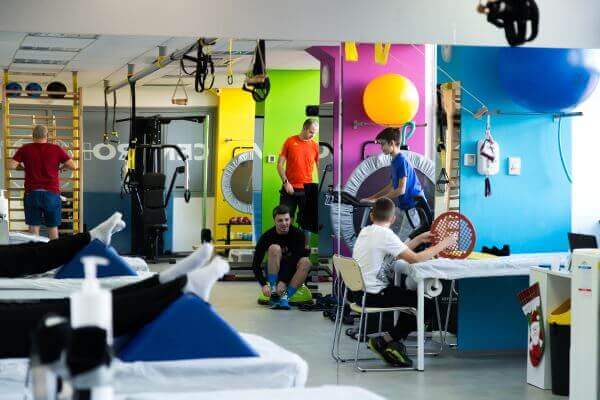
Resistant hamstring lounges
As with the foot press, start with a reasonable weight with which you will perform the exercises during the first week. You can increase your weight by 2.25-5 kg every 10 days, as long as you can work 3 sets of 20 repetitions. If you do not have access to a hamstring cramp, you can continue with the hamstring cramps in your legs, attaching weights to your ankles. Start with 1.5-2.25 kg and add 0.5 kg each week until you reach 3 sets of 15 repetitions with weights of 4.5 kg.
Step-up exercises
For this exercise, place a small stool, a book, or a piece of wood on the floor, about 60 cm from a wall. Place your injured foot on the stool. Maintain your balance by leaning on the wall (figure). Lift yourself slightly on the stool and allow your knee to stretch slightly. Gently lower your opposite foot to the floor, trying not to rest, instead, immediately returning to the "stepped up" position. Start this exercise with 5 repetitions of 3 sets in the first week. Put add one repetition to each session, until you reach 15 repetitions if you do not feel pain in the knee or at the insertion site of the patellar tendon.
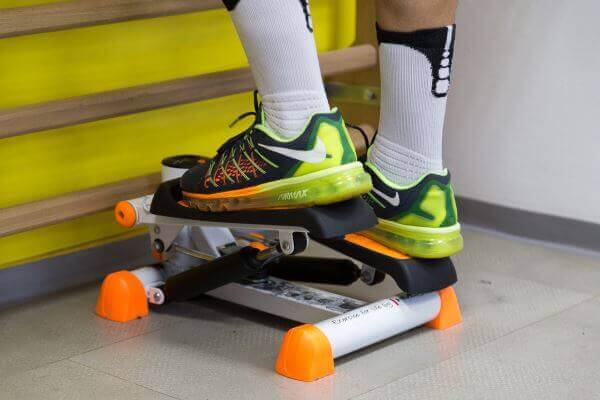

PROGRAMEAZA-TE PENTRU O CONSULTATIE
Pentru ca orice tratament in clinica noastra este bazat pe un diagnostic si se face sub urmarire medicala, pentru evaluarea permanenta a evolutiei.PROGRAMEAZA-TE
RECUPERARI DE SUCCES
PROGRAMEAZA-TE
LA O CONSULTATIE
Vezi aici modalitatile de programare si localizarea clinicii
PROGRAMARE

